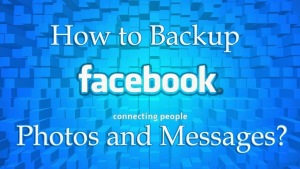Megabytes (Mb) in a Gigabytes (GB)
We all are surrounded by computers everywhere. From a simple calculator to our laptop, everything is a type of computer. Have you ever wonder how many Mb are there in a GB? Well, the answer is pretty straightforward. Each gigabyte (GB) consists of 1000 (thousand) megabytes (MB). (source Google)
1000 MB = 1 GB
Our computers need to store data in an electronic form so that they can make it accessible to us. Here I will teach you the basics of a computer data storage system so that you can understand how computers think a little better.
Storage Units
Computers essentially store data in small units called bytes. Generally, each small byte is broken down into 8 bits. However, sometimes it can be more or less. When a thousand of these bytes come together we call it a kilobyte (KB). When a thousand kilobytes come together, we call it a megabyte (MB), and so on.
Fact: A conventional mp3 song is sized at usually 5 MB.
These small units of information store the information given by a computer in the binary form, that is, in 1s and 0s. Computers cannot understand the human language. They only understand numbers, and that too only 1s and 0s. All video, audio, text that you see or hear on your computer is essentially a combination of these two numbers. The language that these computers use is known as Binary.
History of Data Storage
The first ever computer that was made had a memory of only 5 Mb. That is, it could potentially store only 1 song (which did not exist in a computer file at that moment). The hardware associated with this amount of storage was 50 s24-inch disks!
In 1956 IBM loading 5 MG of hard drive onto an airplane, read more
Current Data Storage Technology
The current data storage facilities put the past facilities to a shame. We commonly use thumb drives (also known as pen drives) that are small than our thumbs and have a capacity of storing more than 1 TB (terabyte) of information. This is essentially 200,000 times the storage available on the first computer. Even smaller forms of data storage that we commonly use are known as microSD cards. These microSD cards are even smaller than a conventional coin and have the same or more storage capacity as that of a thumb drive.
Future of Data Storage Technology
We have already come a long way from the past. However, this is just the beginning. We are starting to make data storage space out of thin air now (Quite literally)! With cloud storage, it is possible to store our data at a remote location. This data storage facility easily allows you to store and access the data from any part of the world over an internet connection.
Use of Data Storage
There are basically two different types of memories that a computer has. One is known as RAM while ROM. While the RAM (Random Access Memory) allows the computer to function on a regular basis by carrying the necessary data back and forth, the ROM (Read Only Memory) stores it for use at a later stage.
The amount of RAM that your computer has decides how many tasks it can handle at a time. A conventional modern-day laptop has a 2 to 32 GB of RAM. The amount of ROM that your computer has decides how many music, movie, etc. files you can store on it for accessing later. A conventional laptop has 32 GB to 2 TB of ROM.
So, the next time someone asks you how many MB are there in 1 GB, you can easily answer them.






